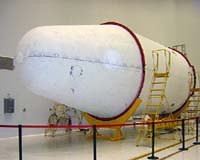This news articles talks about India participation int the Russian 5th generation fighter project.
K. Raghu
Bangalore: India is yet to begin work on a futuristic technology demonstrator plane, a single-seat, fifth-generation fighter it is jointly developing with Russia’s Sukhoi Design Bureau, that will take to the skies for the first time in 2009.
Some analysts are questioning the contribution of Indian aerospace research and development (R&D) engineers to the programme, given that the aircraft’s design specifications have already been decided and the first flight is set for next year.
Futuristic technology:The Sukhoi 30, part of the Indian Air Force fighter jet fleet, on display at the Aero India 2007 air show in Bangalore. India and Russia are working jointly on its advanced variant. (Photo: Abhijit Bhatlekar/Bloomberg)
Futuristic technology:The Sukhoi 30, part of the Indian Air Force fighter jet fleet, on display at the Aero India 2007 air show in Bangalore. India and Russia are working jointly on its advanced variant. (Photo: Abhijit Bhatlekar/Bloomberg)
In October, India and Russia signed an agreement for the joint development and production of the fifth-generation fighter aircraft, or FGFA, making a commitment to sharing resources and work equally. A team of officials from Hindustan Aeronautics Ltd, or HAL, the country’s military plane maker, was in Moscow in late May for discussions on the estimated $4 billion, or Rs17,160 crore, project.
“We are (still) talking about the price and investment costs,” said one person familiar with the development who did not want to be named because of the sensitive nature of the project. “(Also) the more we delay, the less work we will get. That is a fact.”
The fighter plane will havea so-called swept-forward wing—which increases an aircraft’s agility and gives it the stealth feature to reduce risk of detection by radar. The (technology demonstrator) aircraft being built by Sukhoi will use the engines, systems and avionics of the previous generation Su-30 plane.
“If something is going to come in one year, where could we have participation?” asked former air chief marshal S. Krishnaswamy. “That actually has a negative impact onour own R&D people and laboratories.”
Another former Indian Air Force (IAF) official, air marshal B.K. Pandey, said, “If the prototype is already decided, there is nothing original that Indian aerospace industry can contribute to the programme.”
A person familiar with the programme’s development said India would bring in its expertise in carbon-composite technology used in HAL’s Dhruv advanced light helicopter and Tejas light combat aircraft, both of which are homegrown programmes.
Russian, Indian firms will make an equal number of planes during the development phase
Once the technology demonstrator flies next year, Russia will work on developing more than six two-seater prototypes of the stealth fighter. Indian engineers will contribute to the design of the front fuselage, build composites for better stealth features and work on avionics.
“Once the front fuselage undergoes a change (to accommodate two pilots instead of one as in the technology demonstrator), the aircraft lift conditions will change, wings will change. This is where our learning will become useful,” said the person familiar with the development.
The new aircraft would be nearly a third lighter than the Su-30 and be able to fly longer than conventional fighters, besides possessing the stealth features. The aircraft is expected to be ready for induction in the Indian and Russian air forces by 2018.
HAL has in the past produced, under licence, Russian aircraft such as the MiG 21, which forms the bulk of the IAF’s strike fighter fleet. IAF also has in its inventory the Su-30 MkI, the India variant of the fourth-generation Russian fighter with avionics built by an India-led team which HAL will make under licence in the country.
The new Indo-Russian fighter is being designed to carry weapons in its fuselage, making it similar to the Joint Strike Fighter of the US.
While the components and systems would be built equally at the Komsomolsk-na-Amure Aircraft Production Association in Russia and HAL facilities in India, the engines would be made at a factory of NPO Saturn, the Russian engine maker. Both plane makers would build an equal number of aircraft during the development phase.
“Why did Russia want India to join (the programme)? Because they want money, they want (the) market,” said Pandey, a former head of IAF’s training command in Bangalore. “If we can get transfer of technology, HAL (will be) assembling the aircraft, then IAF has to buy the planes. So, they have an assured market”.
A majority of the planes in the IAF’s fleet are of Russian origin, with the rest from the UK and France. Although indigenous military plane programmes have been undertaken by the Defence Research and Development Organisation, or DRDO, and HAL, the Armed Forces remain dependent on imports.
India has floated a global tender to buy 126 multi-role combat aircraft that could cost a minimum of Rs42,000 crore, evoking the interest of aerospace companies such as Lockeed Martin Corp. and Boeing Co. of the US. It also plans to buy nearly 250 light- and medium-weight helicopters.
The Tejas fighter, conceived as a replacement for the ageing Russian-built MiG 21, is at least two years behind certification as it needs to achieve the so-called air staff requirements, or ASR, the standards set by IAF before induction. The military plane unit of Boeing has been asked to assist the Aeronautical Development Agency in certification of the LCA by 2010.
DRDO is now scouting for a foreign partner to build an engine for the Tejas fighter, after its unit Gas Turbine and Research Establishment failed to deliver the Kaveri engine even after nearly two decades of development.

